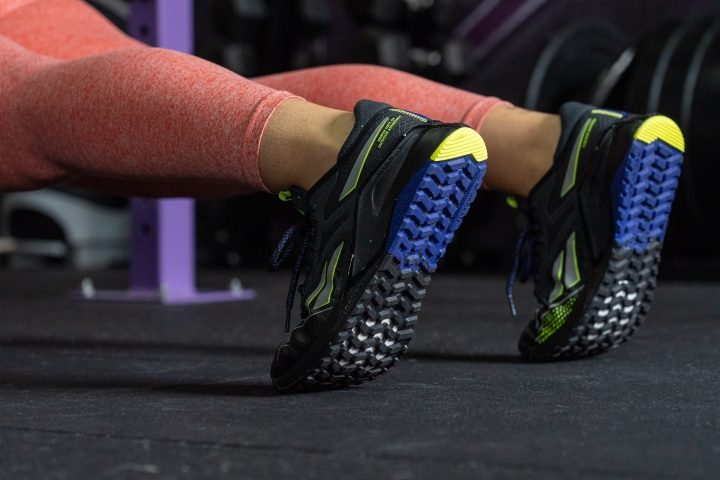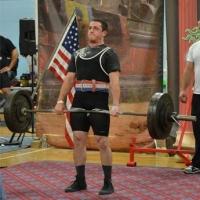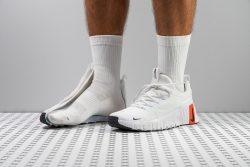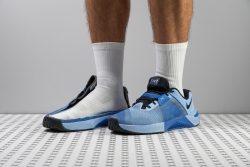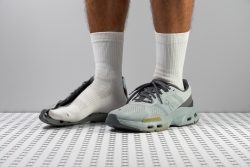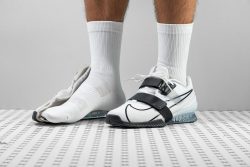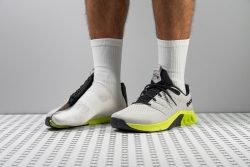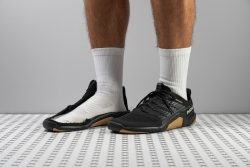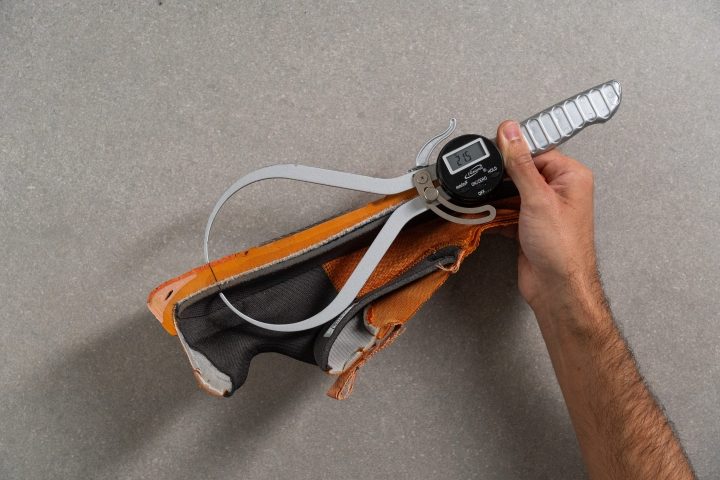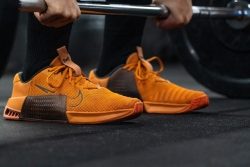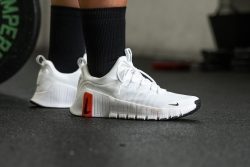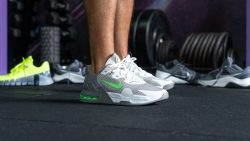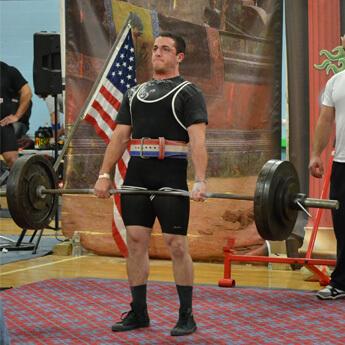7 Best Gym Shoes in 2025

We buy shoes ourselves. We earn commissions when you buy through us, at no extra cost. Why trust us
If you take your workouts seriously, you simply cannot afford to compromise when it comes to your gym shoes. Wearing the wrong shoes not only impedes your performance but also increases your chance of injury.
You need a gym shoe that’s targeted to the type of workout routine you’ll be doing.
Having tested gym shoes from a dozen acclaimed brands, we are here to help you pick the perfect pair for whatever workout routines you have on your calendar. Check out our top picks in seven different categories.
How we test gym shoes
Identifying the gym shoes that truly deliver genuine value requires a serious data-driven selection process. That means spending hours of wear testing the shoes for specific workout routines. We also check and analyze the shoe materials and technologies in our lab.
To ensure the 100% objectivity of our assessment, we perform the following:
- Buy the shoes using our own money.
- Make an in-depth review of the shoes that we’ve tested ourselves. We wear the shoes in the gym, and we lift weights, jump rope, squat, and run on the treadmill. Okay, you get the idea: we base all our reviews on the performance tests that include CrossFit workout sessions.
- Finally, we subject the shoes to various lab tests to bring you quantitative and qualitative descriptions of shoes and their features.
In the end, we feature our favorite picks in various categories.
Best gym shoes overall














































What makes it the best?
Balancing responsiveness and support exceptionally well is the Reebok Nano X4, making it our ultimate gym shoe among trainers we tried and lab-tested. It delivers high performance across the board and seamlessly transitions from lifting to HIIT workouts. Wrapping up a pleasant experience is the immensely breathable Flexweave upper.
On foot, the shoe gives a good feel of the ground for agility and responsiveness for repetitive jumps. Our cut-in-half shoe reveals a strong energy return of 61.0% in the heel and 58.4% in the forefoot, making the experience more enjoyable.
The Nano X4 empowered us to tackle any workout, from static lifts to dynamic lunges and burpees, with unparalleled freedom of movement and secure foot containment. Flexible and stiff in the right places, it conforms to natural foot movement while providing essential stability. Lab tests confirmed its impressive stiffness, scoring 4/5 for both heel counter and torsional rigidity.
Keeping intense sessions more bearable is the well-ventilated upper that scored a well-deserved 4/5 on our breathability test. Our feet always remained dry even after heated indoor sessions, ensuring a comfortable and enjoyable workout.
However, its versatility means it lacks the extra support needed for Olympic lifting and more serious running. Those in niche training should invest in more supportive shoes for their sport.
Pros
- Fantastic wear resistance
- Great balance of cushioning and stability
- Feels grounded and supportive
- Secure foot lockdown
- A fully-gusseted tongue (finally)
- Nice breathability
- Lighter than the X3
- Great grip on gym floors
Cons
- Not for heavy lifting
- Not for wide feet
Best gym shoes for HIIT
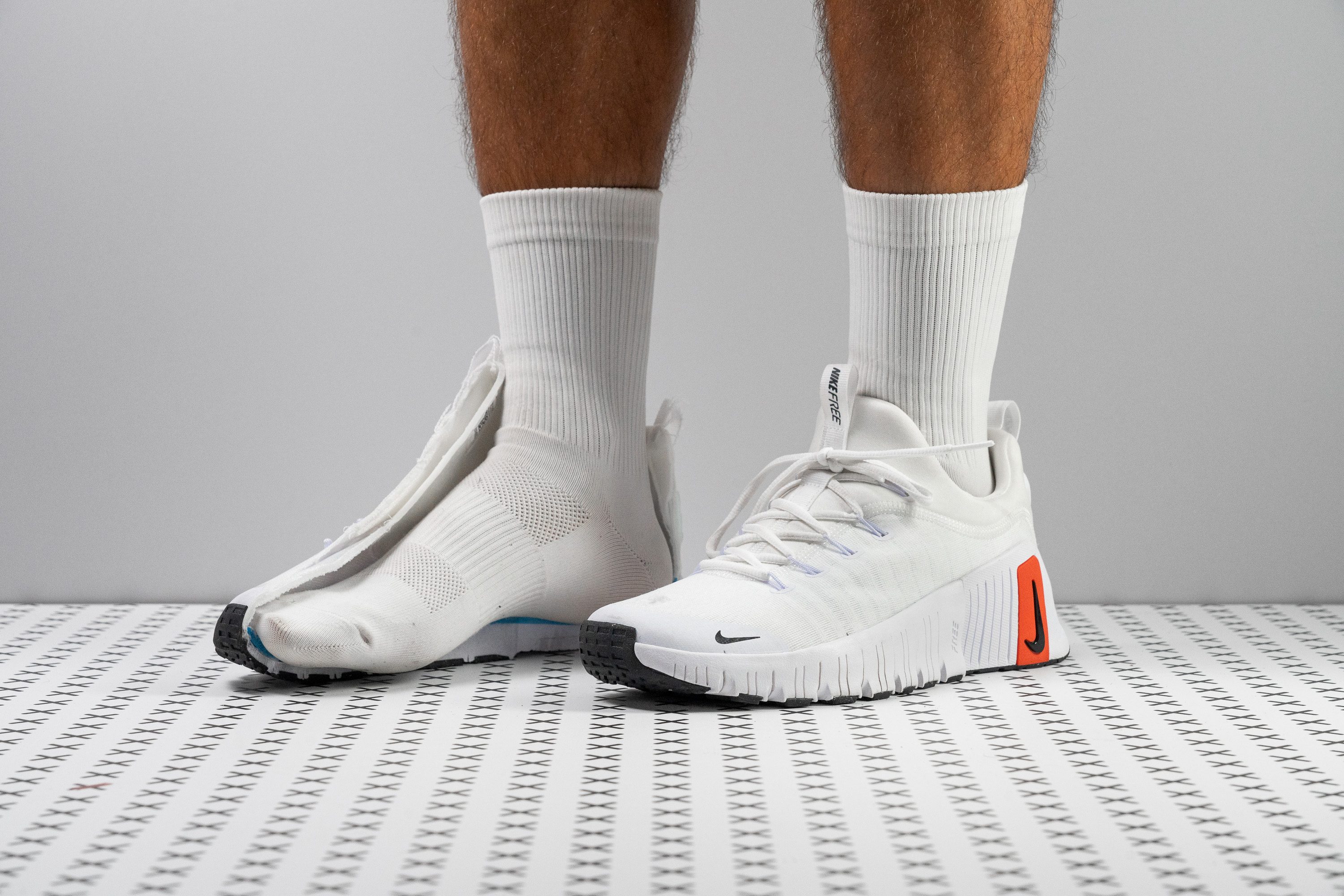





















































What makes it the best?
As its name suggests, we felt free to move, bend, and twist our feet during our workouts with the Nike Free Metcon 6. It’s impressively lightweight and flexible, giving us the agility to perform various exercises effortlessly. Backed up by lab tests, it’s our best gym shoe for HIIT.
From planks to lunges, Free Metcon 6 flowed seamlessly with our natural foot flexions. Our bend test reveals it's mind-blowingly 76.9% more flexible than average, making it the most malleable training shoe in our catalog! We have room to bend liberally because of the deep cutouts throughout the outsole. It’s no surprise we felt very versatile in this trainer.
Even for movements and stretches that require twisting the feet, Free Metcon 6 showed no resistance. In our manual assessment, we awarded it a low torsional rigidity score of 2/5. Despite this, we still felt planted to the ground due to the shoe’s expansive 113.9/94.4 mm midsole.
When moving to cardio routines, we felt quick on our feet thanks to its barely there 9.7 oz (274g) weight, 10.5% below average. We jumped and did burpees effortlessly and when workouts got too intense, we were ultimately refreshed by its exceptional ventilation.
However, because of its grounded platform, we don’t recommend this shoe for cardio and high-impact sessions. These types of programs require more cushioning for comfort.
Pros
- Fantastic breathability
- Very light on foot (lighter than average too)
- Abundant cushioning for HIIT
- Most flexible cross-trainer ever
- Excellent stability for moderate weightlifting
- Sock-like fit in a bootie upper
- Accommodating toebox (for medium feet)
- Great grip on gym surfaces
Cons
- NOT for rope climbs (lacks protection)
- Can be hard to put on (narrow opening)
Best gym shoes for Crossfit















































What makes it the best?
We tested the best gym shoes in and out of the lab and found Nike Metcon 10 the best for CrossFit. We repeated bursts of lifts, squats, and jumps AMRAP (as many rounds as possible). Metcon 10 powered through with its supportive base, flexible structure, and reliable traction.
Among all our WOD exercises, we’re most confident in weightlifting. From split jerks to snatches, Metcon's wide and sturdy base keeps us planted to the ground. Upon checking with our caliper, we have a vast 115.2/90.8 mm platform. This large contact area with the surface stabilizes our form. The midfoot band, together with the sturdy upper, creates a firm foothold. We also can’t help but notice the extra support given by the non-compressible Hyperlift in the heel, giving us the balance we need for all types of lifts.
Metcon 10 shows it's versatile enough as we feel comfortable and stable during box jumps, wall balls, lunges, and other plyometrics. It also delivers excellent traction on our rope climbs and sprints around the box, backed up by its solid 0.38 friction coefficient in our traction test. We remain in control since the midsole is unresisting. Our bend test confirms it’s 13.2% more flexible than the average trainer.
The padded upper feels protective and soft to the touch. Yet, unfortunately, it feels too stuffy for humid indoor sessions. Metcon 10 works best in cool weather.
Pros
- More versatile Metcon overall
- One of the lightest Metcons ever!
- ReactX adds shock absorption and energy return
- Increased forefoot flexibility
- Still amazingly stable for weightlifting
- Fantastic upper durability (even for rope climbs)
- Great grip on gym floors
- Highly secure foot lockdown
- Accommodating fit and toebox
- Handy Lace Tuck
Cons
- Outsole could be more durable
- Upper lacks breathability
Gym shoes with the best shock absorption
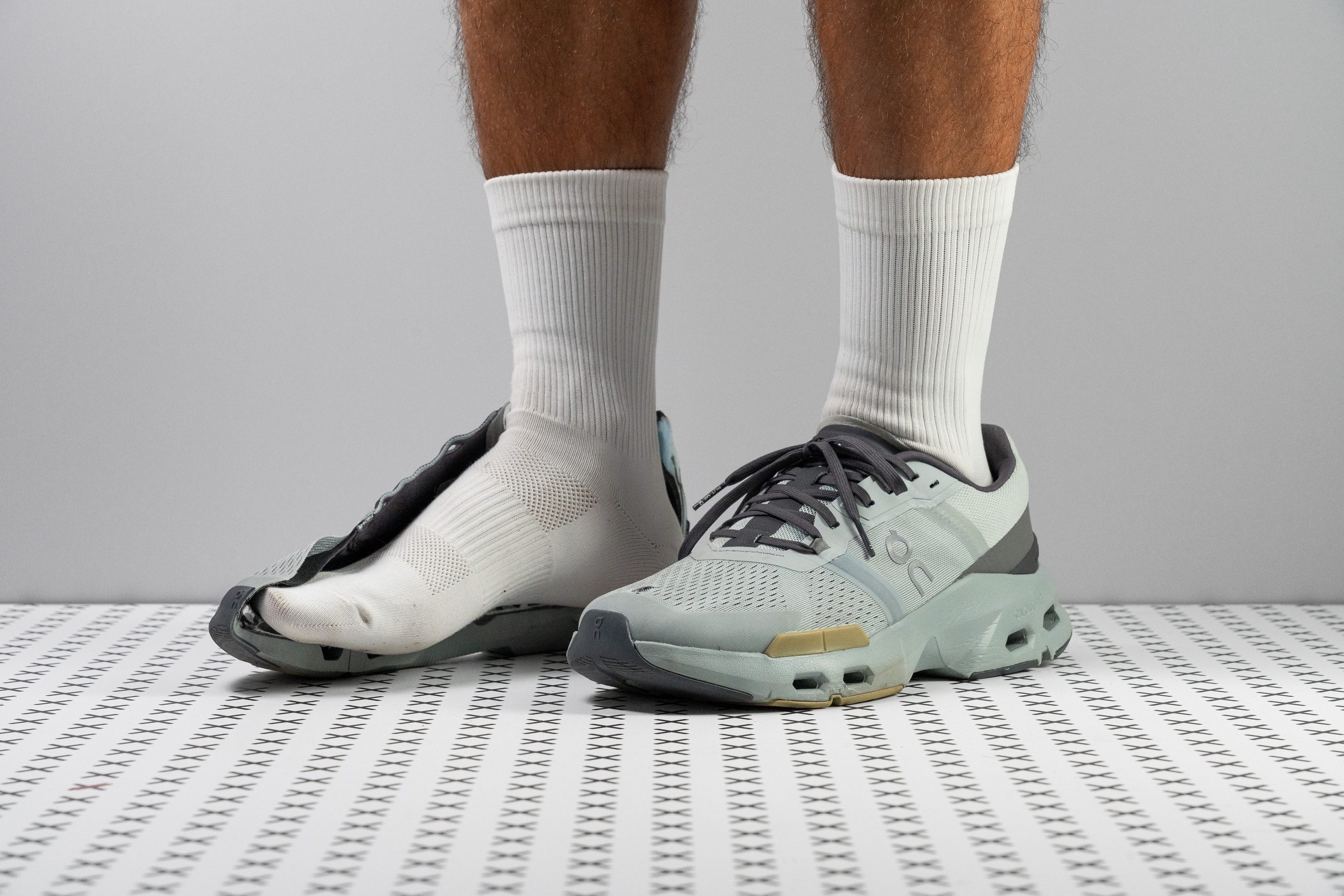

















































What makes it the best?
The On Cloudpulse has a refreshing aura that makes high-intensity and heated workouts more bearable. Our lab tests show its abundant, deep cushioning and seamless ventilation, which made us experience exquisite comfort. It also proves itself as a well-rounded performer because of its responsiveness, yet it truly stands out with the best shock absorption among gym shoes.
Measuring the Cloudpulse, our caliper reveals an above-average stack height of 32.9/23.1 mm, making it one of the tallest shoes in the training category. To further soften our landings, the foam can absorb impact better than average, proven by solid shock absorption scores of 104 SA in the heel and 85 SA in the forefoot. For context, the averages are only 81 SA and 61 SA, respectively.
During intense cardio sessions, our feet can breathe freely and keep the sweat at bay. The porous upper easily allowed smoke to escape in our lab test, earning a well-deserved 5/5 breathability rating.
When we wanted to pump up our hearts, we could quickly pick up the pace. The shoe feels highly responsive, proven by its impressive energy return scores of 58.1% in the heel and 60.0% in the forefoot, making it ideal for short runs and rope jumps.
However, its focus on comfort takes away the stability and structure needed for lifting. This type of workout requires more ground feel and support.
Pros
- Excellent impact protection for HIIT and cardio
- Midsole feels responsive for jumps and runs
- Great lateral support and stability
- Highly breathable upper
- Sturdy and durable construction
- Perfect outsole grip for gym floors
- Accommodating toebox
Cons
- Not for heavy lifting (200 lbs/90 kg max)
- Not very bendy forefoot
- Frail toebox mesh (not for rope climbs)
Best gym shoes for weightlifting
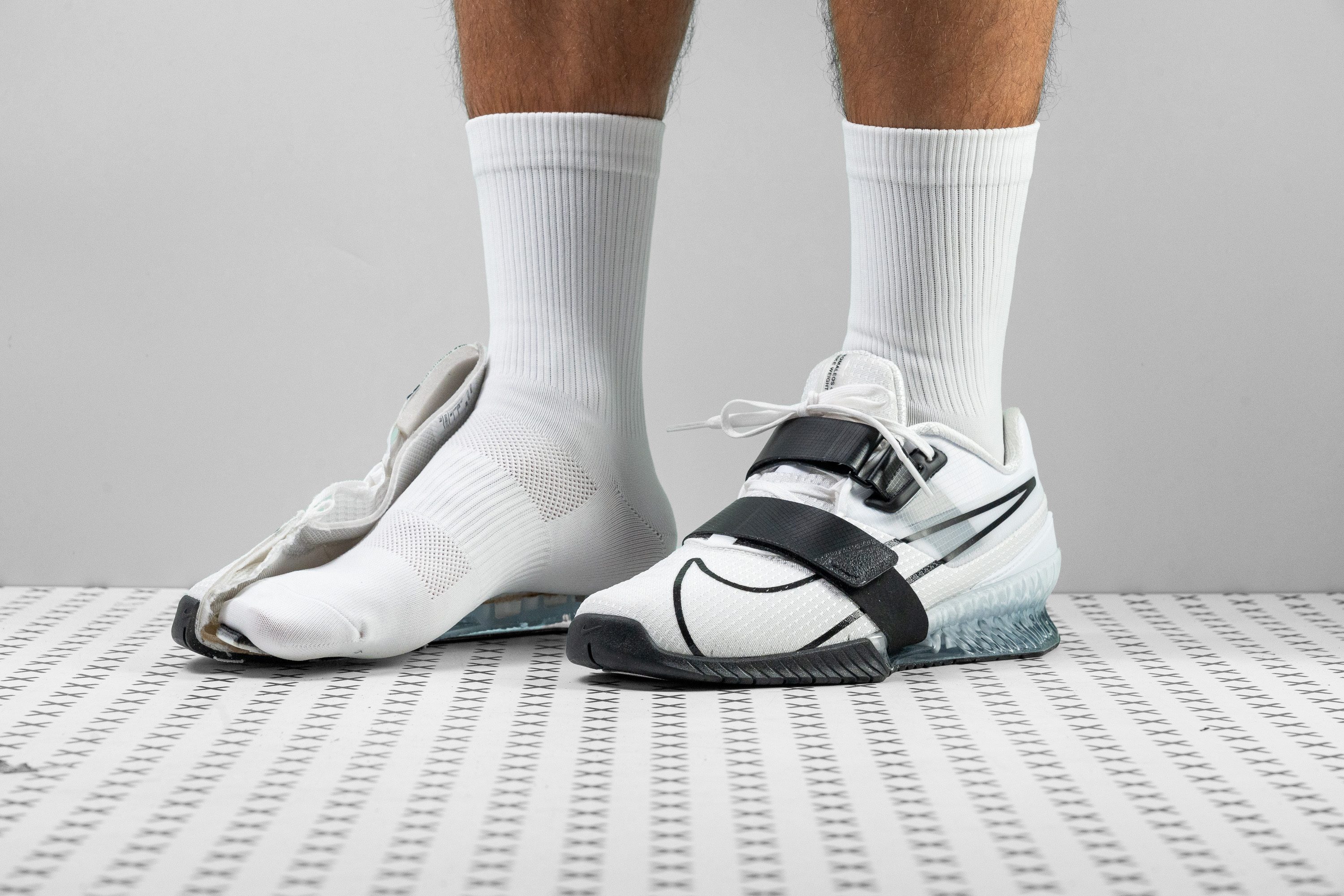





























What makes it the best?
Out of all the gym shoes that we worked out in, it was the Romaleos 4 from Nike that helped us the most during weightlifting. It had quite a supportive fit care of the thick tongue and its two-strap design. This shoe also had a wide base that surely helped with stability. We were also impressed by the stiffness of the heel counter, making it quite effective in locking down the rear foot.
Compared to the 5.6 mm average, the padding in the tongue of the Romaleos 4 is a bit thicker at 7.4 mm. Together with the two in the midfoot, the thick tongue contributed to a comfortably snug fit.
Our caliper measurements in the lab revealed that the midsole platform is 111.5 mm wide at the forefoot while it is 91.3 mm wide at the heel. Given these figures, the Romaleos 4’s midsole is therefore 4.4 mm and 4.2 mm wider than average.
The heel counter felt quite dependable no matter how heavy the plates that we cleaned and jerked with. We did a manual assessment on it in the lab through squeezing, and the heel counter easily got a perfect 5 for stiffness.
We were a bit disappointed with the results of our smoke test for breathability. We saw how challenging it was for smoke to pass through the upper material. Hence, this shoe only got a 2 out of 5 for ventilation.
Pros
- Phenomenal stability
- Sturdy platform and sole
- Better lockdown with two straps
- Comfortable for a lifting shoe
- True to size
- Efficient traction
- Appealing looks
Cons
- Upper lacks durability
- Not for narrow ankles
- Not breathable
Gym shoes with the best traction
























































What makes it the best?
Working out with the Inov8 F-Lite Max gave us the confidence to push boundaries in terms of lifting and dealing with various surfaces. Lab results reveal it offers next-level grip, steadfast stability, and maximum breathability that helped us perform our workouts in better form. Among gym shoes, it undeniably stands out with the best energy return.
We headed straight to our grip-testing machine to put a number on the sticky outsole we enjoyed while performing planks and box jumps. The forefoot friction emerged at a remarkable 0.53, making the rubber 55.9% grippier than average!
In addition to traction, the surefootedness we experienced allowed us to stay in control of our footwork. We discovered an incompressible TPU heel stabilizer, enhanced by the Met-Cradle cage in the midfoot. These two features stiffen the shoe’s structure so that we retain our foot alignment. In our torsional rigidity test, it resisted twisting and got a solid 4/5 score.
To balance all the stiffness, the upper’s breathable build makes up for its gentle touch. The fabric is so airy that the smoke we pumped in escaped nonstop, earning the maximum 5/5 ventilation score.
Unfortunately, the shoe is heavy at 12.1 oz (344g). Gym rats who incorporate lots of cardio and running into their routine should find a more agile trainer.
Pros
- Fantastic stability for lifting and Crossfit
- Great for heavier lifting (stiff TPU heel)
- Awesome for wide feet
- Good forefoot flexiblity
- Highly breathable toebox
- Solid outsole durability
- Protection for rope climbs
- The stickiest outsole rubber
Cons
- Heavier than average
- Clunky and firm for HIIT/cardio
- Frail upper fabric
Best minimalist gym shoes











































What makes it the best?
Among all the gym shoes we put to the test through rigorous exercises, the Inov8 Bare-XF Pro embodies minimalism best in all aspects. From its lightweight, flexible build and grounded platform, our lab results confirm that its simple nature enhances our stability, control, and muscle strength.
The moment we wore this trainer, we instantly recognized its unassuming build. Our scales confirm it's only 8.7 oz (248g), 19.0% below average, boosting our speed and agility. Our caliper reading indicates that the midsole is significantly more grounded than usual, specifically at 6.9/6.8 mm. With its non-existent 0.1 mm drop and proximity to the ground, we had a better feel of the surface and therefore, better control of our movements.
The Bare-XF Pro delivered minimum resistance to twisting and bending, which makes performing exercises effortless. Our manual assessment confirms the midsole easily twists to our demands, with the lowest 1/5 torsional rigidity score. Meanwhile, our bend test proves it’s 67.3% more adaptive than average, displaying one of the highest flexibility scores we’ve seen.
While freedom of movement is good for athletics, it lacks support for serious lifting. Gym rats who carry heavy loads should find a more stable base.
Pros
- True barefoot-like experience
- Foot-shaped and roomy toebox
- Super lightweight
- Extremely flexible
- Sock-like in-shoe feel
- Promising durability
- Protection for rope climbs
Cons
- Pricey for its kind
- Moderate breathability
- Subpar outsole girp
How to choose gym shoes
There are several things you should consider to help you reduce your options and locate the ideal pair of gym shoes for your needs:
- Type of shoe (cross-training shoe, lifting shoe, etc.)
- Preferred heel height and heel-to-toe drop
- Cushioning type and softness
- Balance of flex and stability
- Level of breathability
- Fit of the shoe

Types of gym shoes
The first step is to match your search to the type of training you’ll be doing. Here are the three main types of gym shoes, along with their differentiating features:
- cross-training shoes
- Crossfit shoes
- weightlifting shoes
Cross-training shoes
The most versatile in the bunch, cross-training shoes are designed to be adaptable enough for a wide range of workout types. They provide support and cushioning for various exercises like lifting weights, plyometrics, and running. Most of them can also be worn casually outside the gym.
Cross-training shoes are equipped with:
- shock-absorbing cushioning
- support for side-to-side motions
- flexibility to do lunges and similar moves
- durability for high-intensity workouts
- traction for stability while training
Cross-training shoes include the more niche category of Crossfit shoes.
Crossfit shoes
CrossFit shoes are specifically made to accommodate CrossFit training, which is harder on shoes, focuses a lot on lifting, and includes more abrasive exercises like rope climbs.
Shoes made for Crossfit have very similar features to cross-training shoes, such as:
- flexibility for various exercises
- lateral assistance for side-to-side motions
- sturdy design to handle demanding workouts
- traction to enhance stability for lifting and jumping
But here is what makes Crossfit shoes different:
- less cushioning
- lower heel-to-toe drop (0-5 mm) for a more grounded feel
- added protection for rope climbs
Weightlifting shoes
Weightlifting shoes are made to keep your feet secure and supported when you lift.
They've got the following attributes:
- elevated heel (15-21 mm) for improved squatting depth and form
- strong, non-compressible sole for enhanced power transfer and a stable foundation
- Velcro straps to ensure a snug fit and prevent slippage
- minimal padding to enhance stable bases
- robust design to withstand heavy use
Choose the right heel height and heel drop first
Surprised?
It is so easy to overlook this one but the midsole thickness in the heel is one of the crucial characteristics that can make or break your experience with gym shoes.
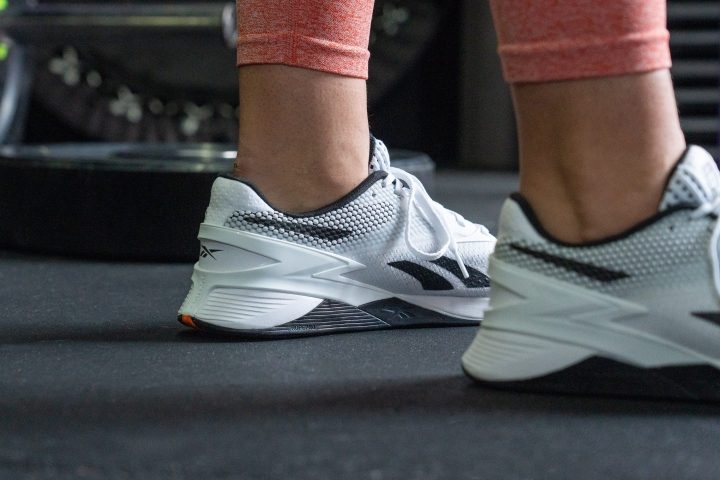
Heel height
The heel heights of gym shoes range from absolutely flat to several inches high. Your personal tastes and the kind of training you do will determine the appropriate heel height for you.
| Cross-training shoes/Crossfit shoes | |
| Lower heel (<24 mm) | Higher heel (> 24 mm) |
| creates a more grounded platform for Crossfit or any other exercises that call for a stable basis | offers more support and impact protection if you're engaging in lots of jumping or running |
Crossfit shoes like Nike Metcons have about 21-22 mm of heel stack.
| Weightlifting shoes | |
| Lower heel (<20 mm) | Higher heel (> 20 mm) |
| creates a more grounded platform for deadlifting | translates to a more ergonomic posture and better energy transfer when squatting and lifting heavy |
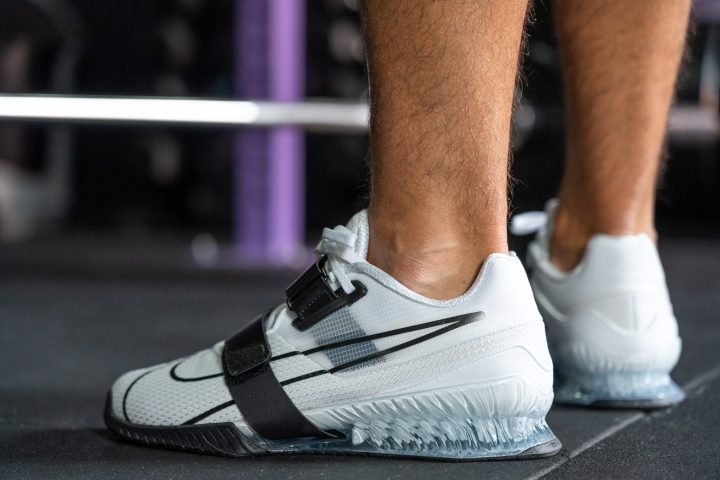
Heel-to-toe drop (or how flat should your gym shoes be?)
The difference in height between the shoe's heel and forefoot is referred to as the heel-to-toe drop. It has a great impact on the wearer's underfoot experience. Crossfitters will benefit from a 4-6 mm drop as it puts their feet in a flatter position, almost as if it was standing flat on the floor.
A higher heel drop, on the other hand, will add more cushioning under the heel. This will provide better shock absorption on hard landings.
| Lower drop (<6 mm) | Higher drop (> 6 mm) |
| more grounded and flexible | more cushioned and supportive under the heel |
NOTE: Heel drop is NOT the same as heel height
For example, NOBULL Outwork and NOBULL Outwork Edge have the same heel-to-toe drop - 4 mm. However, the heel height is different:

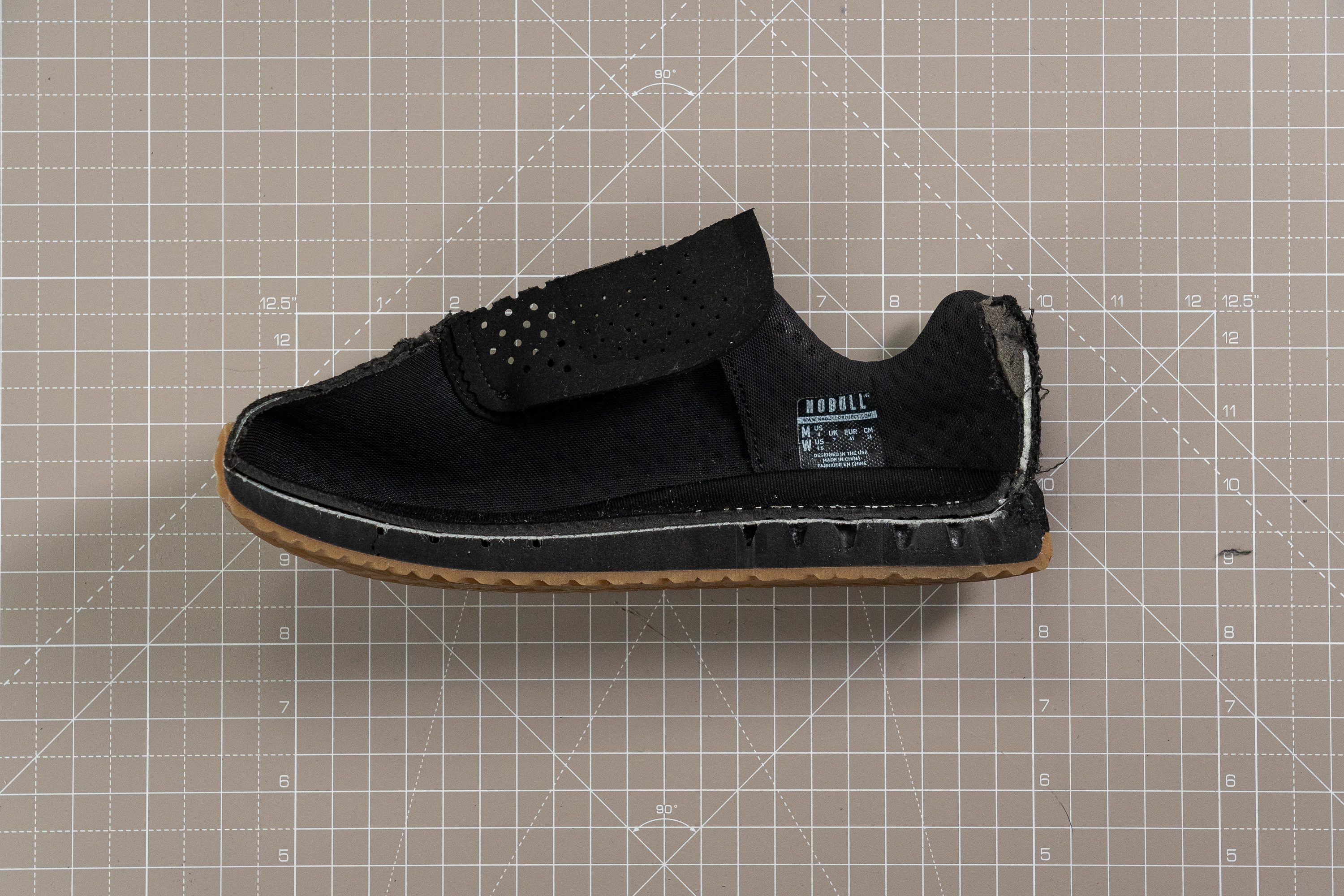
The added cushioning in the Trainer+ gives more impact protection for jumps and runs as well as comfort for daily wear.
Cushioning in gym shoes
Too little cushioning can make the shoe feel hard and uncomfortable for jumps and sprints. However, an overly plush midsole can make you feel shaky and unstable when lifting. What's the right balance here?
That depends on your personal preferences and the type of workouts you do.
Testing the shock absorption of gym shoes in our lab.
For high-impact activities like cardio, you might want more shock absorption to attenuate the impact of repetitive landings. In this case, more cushioning also helps to relieve strain on the joints and lowers the risk of injury. Choose gym shoes with a shock absorption measurement of at least 90 SA in the heel.
For strength training with weights, you will definitely want to go with firmer midsoles with less cushioning. Go for trainers with a lower shock absorption reading of 85 SA or less.
And if you want the best of both, opt for gym shoes in the moderate range of 80-90 SA for a perfect balance of cushioning and control.
Balance of flex and stability
The sole needs to be flexible and adaptable enough to let your feet naturally move. Additionally, it should bend where your foot naturally flexes to give you the best possible mobility and comfort.
Exercises like lunges, squats, and others call for a full range of motion in your feet. This is provided by a flexible sole.
Weightlifting, on the other hand, calls for a stiffer sole. Too much bending will make you feel shaky under heavy loads.
The midsole needs to offer enough support for your feet to shift laterally or alter course. A sturdy midsole can also help prevent ankle injuries by lessening the possibility of your foot moving inward or outward during exercise.
That's why, in top-rated cross-trainers, you often see the following setup:
- firm and stable heel
- supportive sidewalls in the midfoot
- flexible forefoot
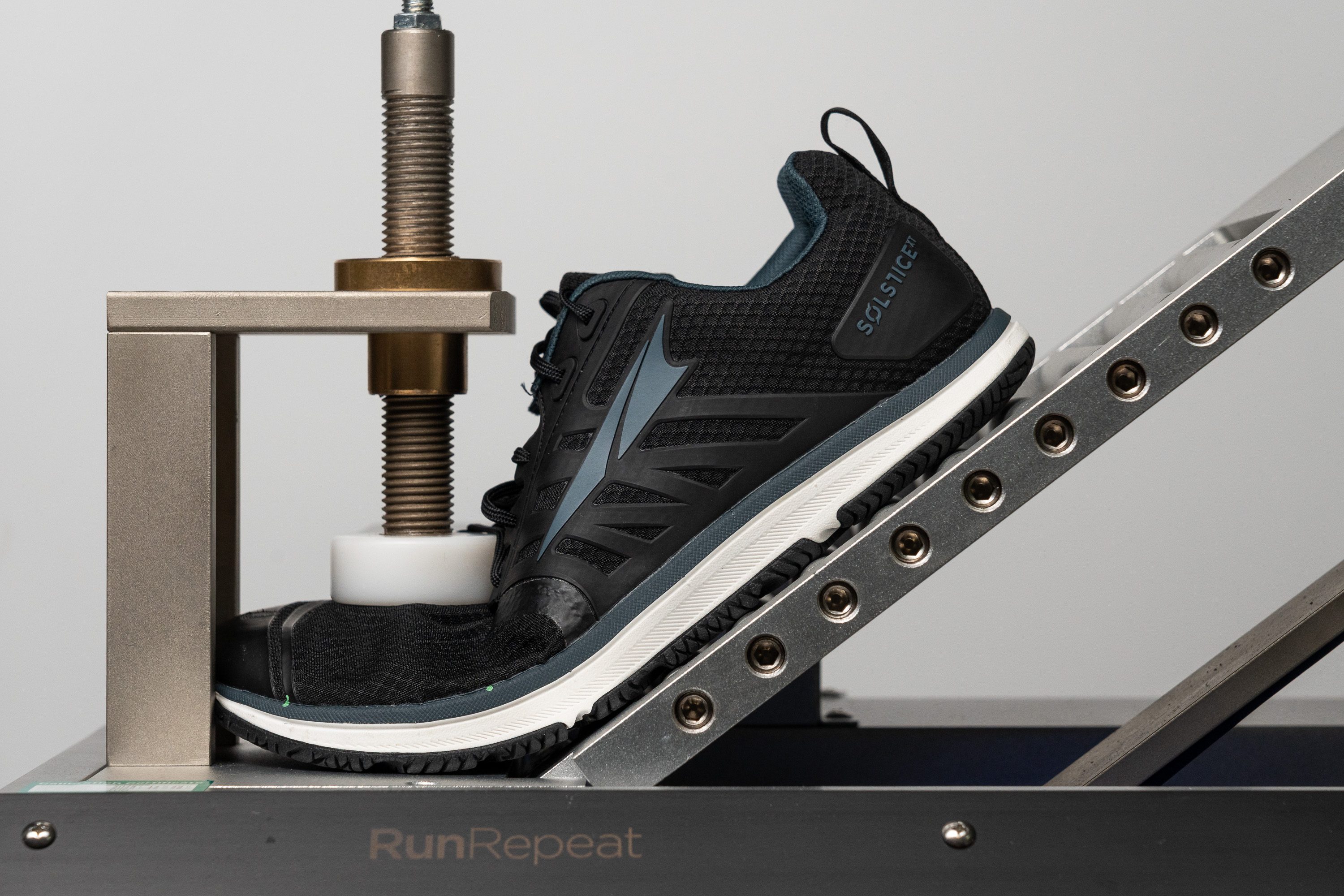
We measure all of these parameters in our lab to offer the most in-depth look into each shoe's flexibility and stability levels.
Assessing torsinal rigidity on 1-5 scale, where 5/5 is the most rigid
Notice how more flexible shoes also tend to have less torsional rigidity (lateral stability) and stiffer shoes are also torsionally stiffer.
Consider the heel counter too
The portion of the shoe that wraps around the rear of the foot and offers support and stability is known as the heel counter.
You want a strong, well-constructed heel counter that is snug without being too tight. A good heel counter will help avoid ankle injuries and offer a firmer foundation for workouts requiring balance and lateral motions.
We perform a manual test to rate each shoe's heel counter stiffness on a 1-5 scale
Weightlifting shoes have the sturdiest heel counters, followed by Crossfit shoes, and then more minimalist cross-trainers. Here is the list of gym shoes sorted by the stiffness of their heel counters:
Level of breathability
Look for gym shoes with a breathable upper to keep your feet dry and cool while exercising.
For breathability, knit or mesh uppers are fantastic choices because they enable air to flow freely. A permeable upper also helps lessen bacterial growth and reduce foot odor.
To test breathability, we pump smoke into the shoe's upper and check how easily it passes through.
We also back it up by hovering the shoe's half-cut upper over the light to see the most ventilated areas.
Fit of the shoe
A gym shoe's upper should be comfortable on your foot without being too tight. Look for footwear with a wide toe box and sufficient area for your foot to flex freely. The upper should also provide enough support during lateral movements or changes in direction.
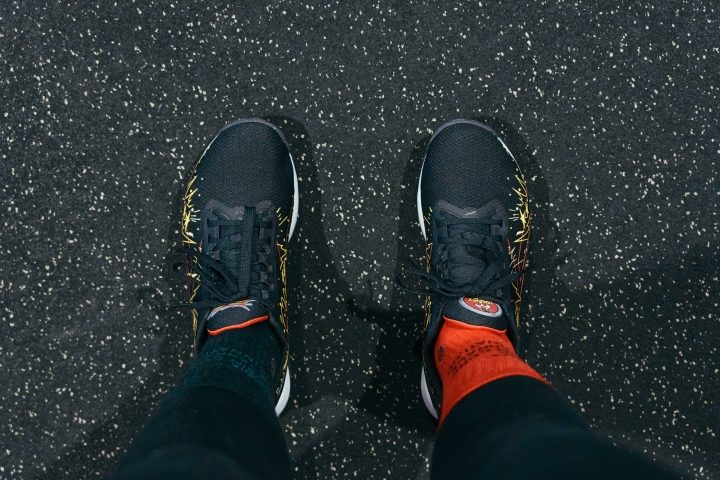
The shoe width in training shoes ranges from 90 mm to 100+ mm in the widest part, but unlike running shoes or sneakers, they average at 97 mm. Trainers also tend to be less tapered than the other shoe categories (they have a more accommodating, rounded toebox shape).
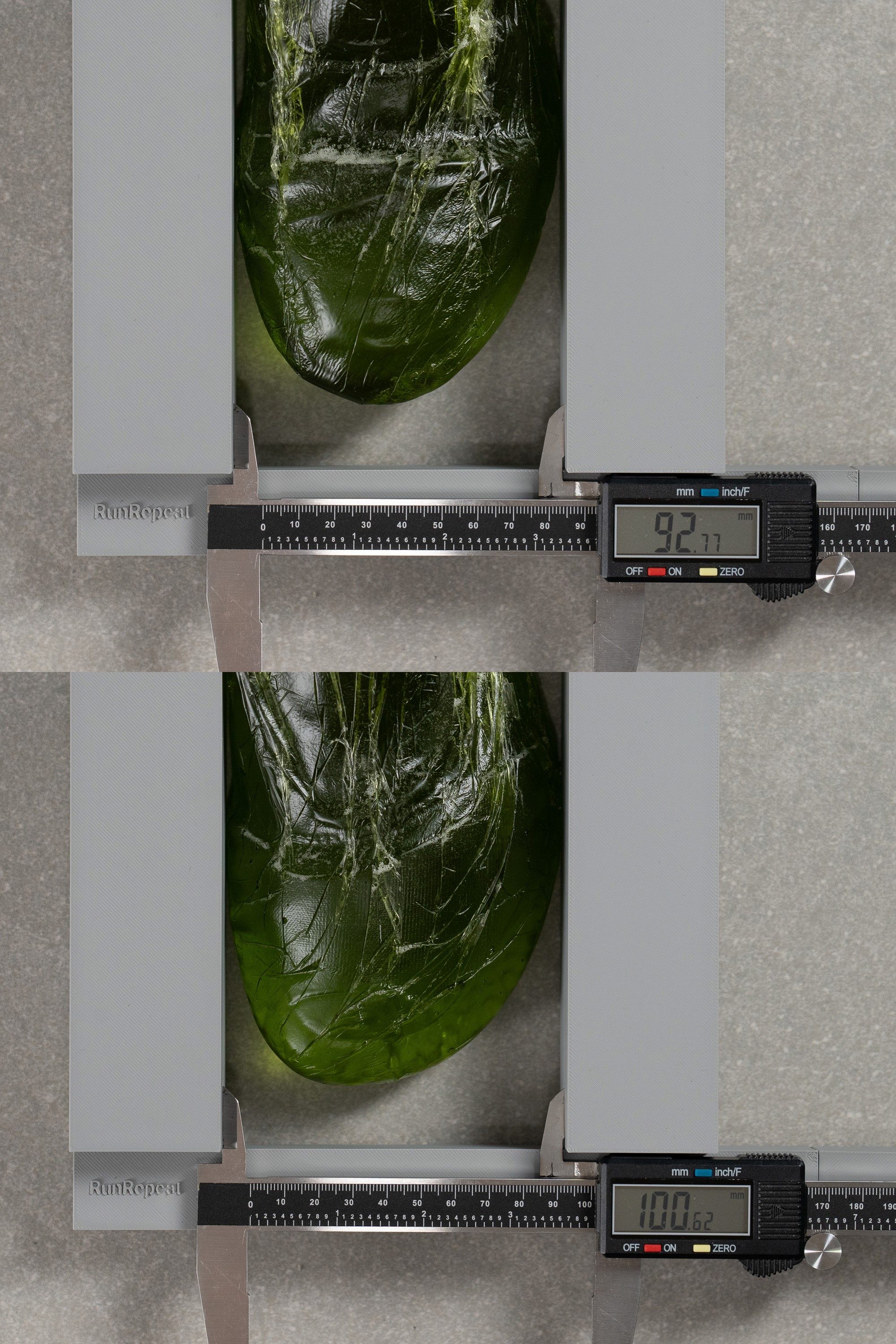
Here is how different the toebox width and the shoe width can be in different shoes of the same size (men's US 9):
How frequently should you buy new gym shoes?
Gym shoes have different lifespans depending on usage, the intensity of activity, and shoe quality. A reasonable rule of thumb, though, is to switch out your gym shoes every six to twelve months, or if you detect substantial wear and tear, a loss of support, or discomfort.
In our shoe lab, we go hard on gym shoes with our relentless Dremel. Using a sandpaper tip, we drill such high-wear areas as the toebox, the heel padding, and the outsole to see how abrasion-resistant they truly are.
You can see how the two shoes react differently to the exact same Dremel test. One is barely touched while the other is left with a see-through hole!
Sturdy leather uppers of weightlifting shoes obviously top this list.
Can I wear running shoes to the gym?
While gym shoes and running shoes may have a similar appearance, they are made for different forms of activity. We found that about 98% of running shoes do NOT offer the support and stability required for lateral movements or weightlifting because they are designed solely for forward motion.
It is much better (and safer!) to select exercise footwear made specifically for the workout you intend to perform.
The fastest way to explain the difference between the two types of shoes is by showing our lateral stability tests below.
Notice how the training shoe above feels cemented to the floor.
Can I wear my gym shoes outside of the gym?
Yes, as long as they are comfortable and acceptable for the situation, you can wear your gym shoes outside of the gym. Just keep in mind that repeated wear on hard surfaces like concrete will hasten wear and tear.
Some gym shoes might not be appropriate for activities like hiking or trail running. But even that is now being accommodated with trail-ready versions of the Reebok Nano.
